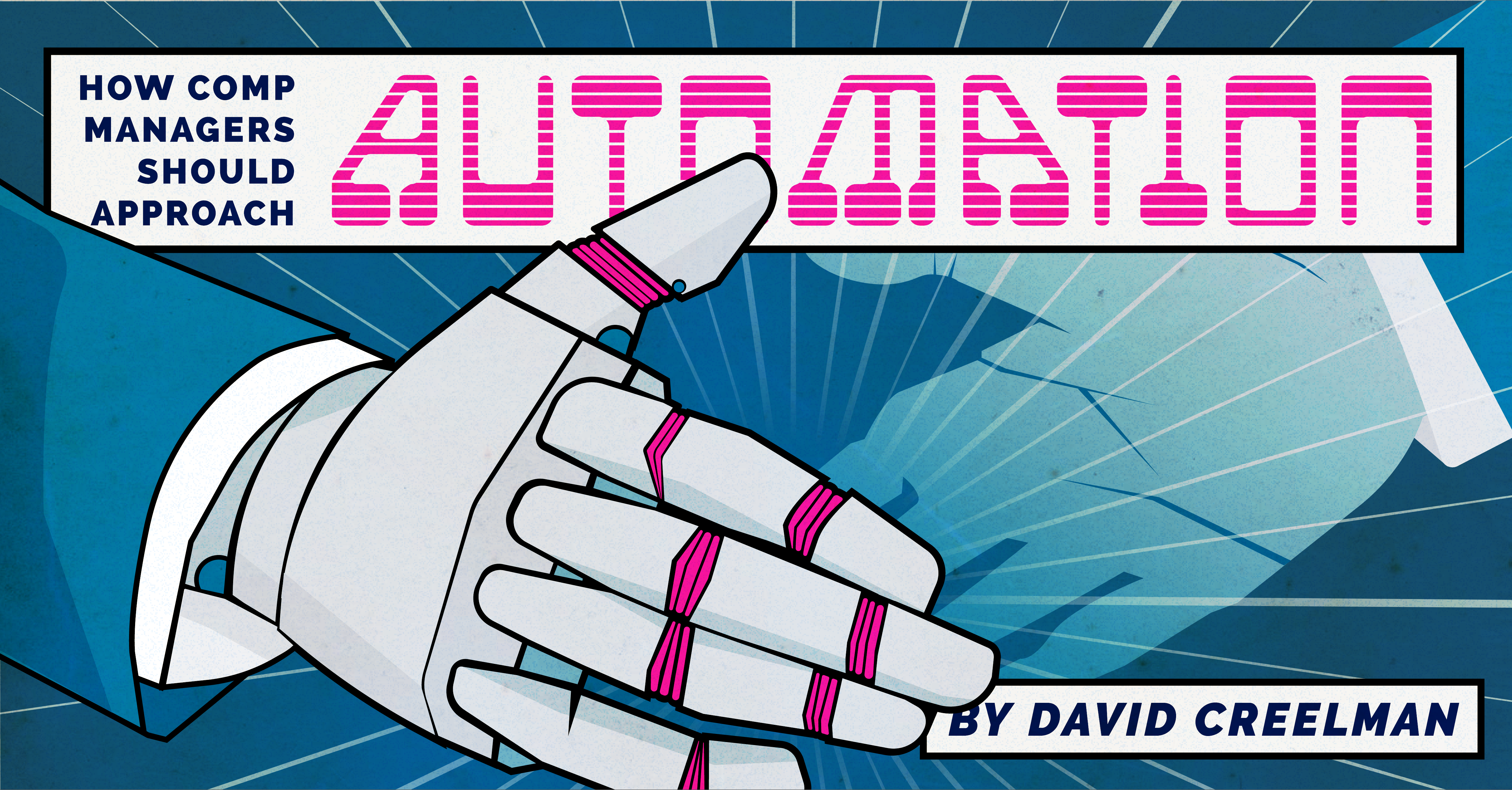
This is an article in an ongoing series by David Creelman about redesigning compensation planning to acquire and retain top performers. This week’s article is about compensation automation. You can catch up on our previous discussion about risk management in incentive plans by clicking here.
The excitement surrounding advancements in digital transformation, AI, and automation often obscures the pertinent details concerning the actual business impacts of these developments. The vision behind all this talk of change implies that with some forthcoming magical technology, we’ll one day be able to push a button and conjure our finished compensation work on demand. We know this won’t be true, but we may be less clear on exactly how automation will progress in this area. Let’s discuss that now.
So, What is automation?
Automation is best understood as any technological tool that speeds up the completion of your work. Automation could be something amazing, like an AI that recommends a pay policy. More likely, automation will be something more straightforward, such as a tool that helps automatically download market data. A pivot table is one such example of automation. It’s merely a function within Excel, but it automatically completes a task that required manual direction beforehand.
Suppose we view automation as any tool or process that hastens the completion of work. In that case, we will recognize that much automation isn’t about overhauling whole tasks but rather streamlining the individual elements of a process. Automation is the wise application of tailored tools to the requisite parts of this process.
Once you see automation as the wise application of these tools, you’ll recognize something more. People stay right in the midst of the process wherever it’s helpful. A compensation analyst may have various tools to import data, complete discrete analyses, and create reports. Thanks to automation, they might do the job many times faster and more accurately than an analyst lacking this collection of automation tools, but automation won’t remove the analyst from their role in the process of administration. This means that you don’t need an enormously smart automation tool that can do everything flawlessly, in all circumstances, from end to end. The comp analyst provides all the necessary brain work to deal with exceptions, complexities, and other difficulties. We might coin a term like “user-supervised automation” to clarify that we do not imagine a system that does everything on its own.
Where Automation Can Help Compensation Pros
Compensation is a rich area for user-supervised automation. The right tools can assist with efficient workflows, pull data into your systems, and automate calculations for tasks like pro-rationing salary. Automation can also help with compliance checks, such as ensuring managers stay within a salary budget and submit explanations for deviations from guidelines. Automation can run all kinds of audits to look for errors, generate reports, and accomplish mass mailing.
If your compensation team is not benefiting from many of these elements of automation, then it is time to look into the tools available on the market. You can find many of these tools in specialized compensation packages, and others you can craft on your own.
How to Move Forward with Automation
A great rubric for determining what it will take for your compensation team to move forward can be found in detective novels. Detectives are always looking for means, motives, and opportunities. In compensation departments, “means” translates to “Are the staff tech-savvy?”; if not, you’ll need to bring that competency onto the team. The compensation leader drives motive. Is the leader pushing for continual improvement? Opportunity comes down to giving the compensation team the initial time to apply automated practices and the budget to acquire the needed compensation tools.
Given the enormous potential for automation to improve the effectiveness of compensation departments, continuously improving automation should be high on a compensation leader’s priorities. The key is to step away from vague visions of total transformation and instead think of the many opportunities for user-supervised automation. ⬤

